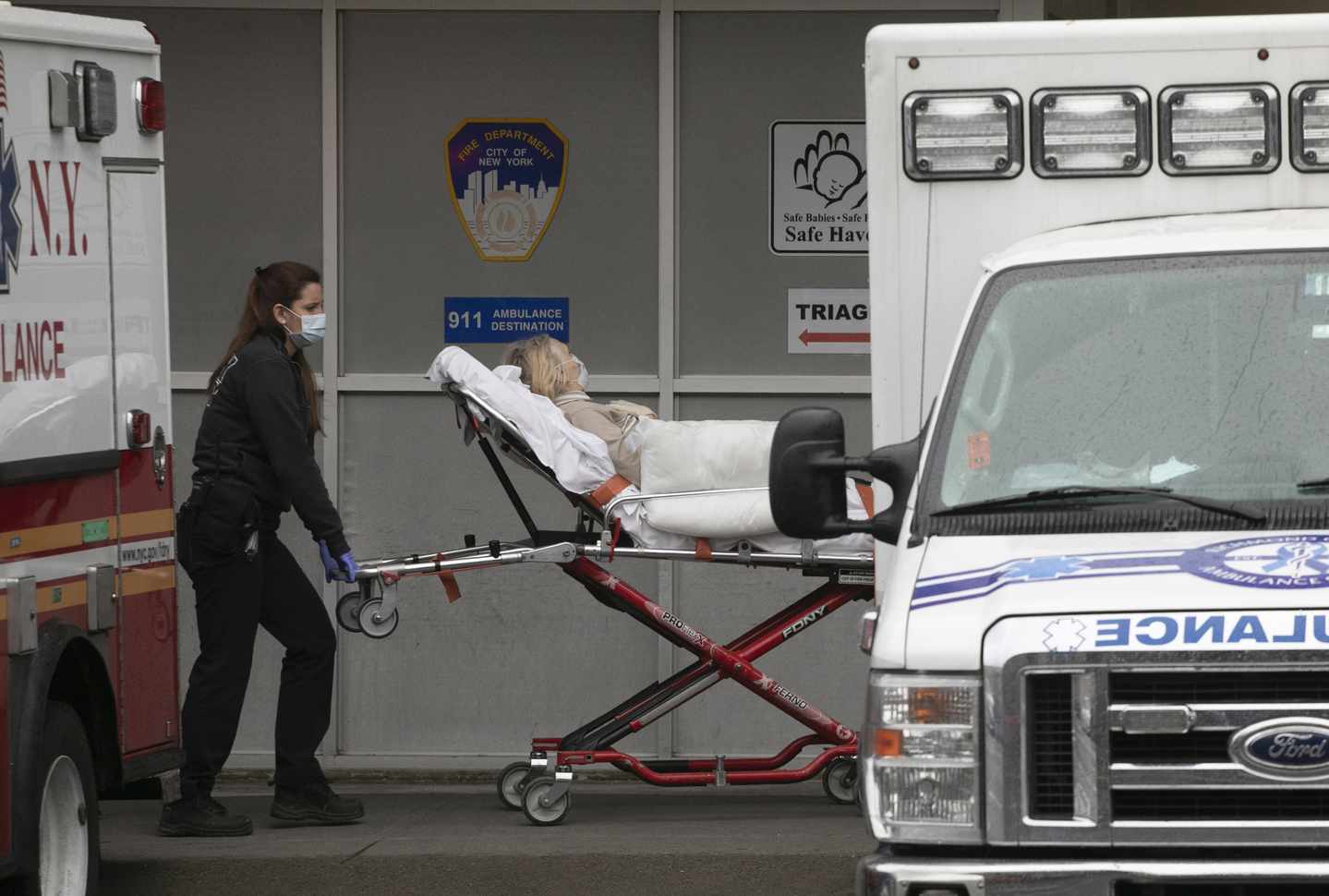U.S. COVID-19 Death Toll Is Inflated
By Tmothy
RealClearPoltics.com

The latest Centers for Disease Control data show that the COVID-19 fatality rate is 0.26% -- four times higher than the worst rate for the seasonal flu over the past decade. That is dramatically lower than the World Health Organization’s estimate of 3.4% and Dr. Anthony Fauci’s initial guess of about 2%.
When the CDC projected 1.7 million deaths back in March, it used an estimated death rate of 0.8%. Imperial College’s estimate of 2.2 million deaths assumed a rate of 0.9%. The fear generated by the projections drives the public policy debate. The Washington Post headline, “As deaths mount, Trump tries to convince Americans it’s safe to inch back to normal,” were part of a steady diet of such fare. When Georgia opened up over a month ago, the Post warned: “Georgia leads the race to become America’s No. 1 Death Destination.”
The CDC currently puts the number of confirmed deaths at about 100,000. But even the “best estimate” 0.26% fatality rate is a significant overestimate because of how the CDC is counting deaths. The actual rate is fairly close to a recent bad year for the seasonal flu. And though public health officials have been transparent about how they are counting coronavirus deaths, the implications for calculating the infection fatality rate are not appreciated.
“The case definition is very simplistic,” Dr. Ngozi Ezike, director of Illinois Department of Public Health, explains. “It means, at the time of death, it was a COVID positive diagnosis. That means, that if you were in hospice and had already been given a few weeks to live, and then you also were found to have COVID, that would be counted as a COVID death. It means, technically even if you died of [a] clear alternative cause, but you had COVID at the same time, it’s still listed as a COVID death.”
Medical examiners from Colorado to Michigan use the same definition. In Macomb and Oakland counties in Michigan, where most of the deaths in that state occurred, medical examiners classify any death as a coronavirus death when the postmortem test is positive. Even people who died in suicides and automobile accidents meet that definition.
Such expansive definitions are not due to rogue public health officials. The rules direct them to do this. “If someone dies with COVID-19, we are counting that as a COVID-19 death,” White House coronavirus response coordinator Dr. Deborah Birx recently noted.
Beyond including people with the virus who clearly didn’t die from it, the numbers are inflated by counting people who don’t even have the virus. New York has classified many cases as coronavirus deaths even when postmortem tests have been negative. The diagnosis can be based on symptoms, even though the symptoms are often similar to those of the seasonal flu.
The Centers for Disease Control guidance explicitly acknowledges the uncertainty that doctors can face when identifying the cause of death. When coronavirus cases are “suspected,” the agency counsels doctors that “it is acceptable to report COVID-19 on a death certificate.” This advice has produced a predictable inflation in the numbers. When New York City’s death toll rose above 10,000 on April 21, the New York Times reported that the city included “3,700 additional people who were presumed to have died of the coronavirus but had never tested positive” – more than a 50% increase in the number of cases.
Nor can this be explained by false-negative results in the tests. For the five most commonly used tests, the least reliable test still scored a 96% accuracy rate in laboratory settings. Some doctors report feeling pressure from hospitals to list deaths as being due to the coronavirus, even when the doctors don’t believe that is the case “to make it look a little bit worse than it is.” That is pressure they say they never previously faced in reporting deaths from the seasonal flu.
There are financial incentives that might make a difference for hospitals and doctors. The CARES Act adds a 20% premium for COVID-19 Medicare patients. Birx and others are also concerned that the CDC’s “antiquated” accounting system is double-counting cases and inflating mortality and case counts “by as much as 25%.” When all these anomalies are added up, it becomes apparent that we simply don’t have an accurate death toll from this new coronavirus. But it seems clear that the correct rate is just a little worse than the rate for the 2017-2018 flu.
Meanwhile, the Washington Post, New York Times, and others claim that we are undercounting the true number of deaths. They reach that conclusion by showing that the total number of deaths from all causes is about 30% greater than we would typically expect from March through early May. They then conclude that the excess is due to deaths not being accurately labeled as due to the coronavirus.
But these are not normal times. Many people with heart problems aren’t going to the hospital for fear of the virus. Delaying cancer surgeries and other serious medical treatments for months has real impacts on life expectancies. The stress of the situation is almost certainly increasing suicides and other illnesses. Which is not to minimize the threat: Even if the true death toll is now closer to 50,000 than 100,000, this pandemic is a big deal. But we need some perspective. During the 2017-18 flu season, 61,000 Americans died from the flu.
Public health officials need to face a lot of serious questions about how they counted Coronavirus deaths. We don’t have all the answers yet, but it’s clear the inflated numbers have helped mislead people into a state of alarmism.

